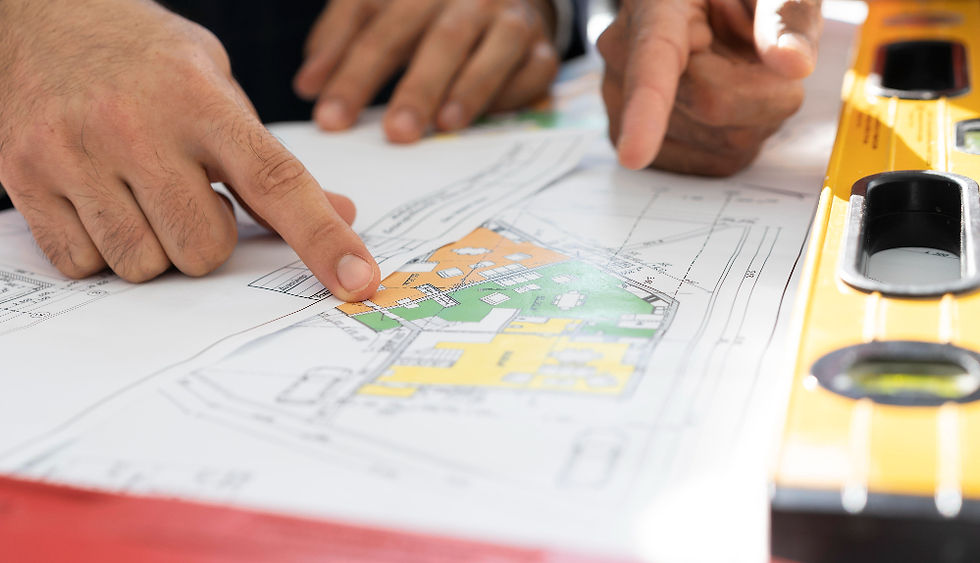Zoning and Regulatory Hurdles
- RBA
- Oct 31, 2024
- 3 min read
By RBA Architects
White Paper

Overcoming zoning and regulatory hurdles in residential development requires a strategic and collaborative approach. Here are several key steps that developers can take to navigate these challenges:
Understand Local Zoning Regulations:
Conduct thorough research on local zoning codes and regulations. Engage Civil Engineers and Architects to provide thorough research.
Hire experienced land-use attorneys or consultants familiar with local zoning laws.
Stay informed about changes in zoning regulations and adapt strategies accordingly.
Engage with local planning authorities early to clarify zoning requirements.
Establish open lines of communication with planning officials and regulatory bodies. Find a champion in the planning department who can be your biggest cheerleader for the project.
Attend public hearings and meetings to understand the concerns and priorities of regulatory agencies.
Seek pre-application meetings to address concerns and gather insights into potential roadblocks.
Establish a positive relationship with regulatory bodies to facilitate smoother approval processes.
Conduct Comprehensive Due Diligence:
Prioritize a comprehensive due diligence process before acquiring land.
Identify potential regulatory challenges and constraints early in the planning phase.
Evaluate the project's feasibility within the context of existing zoning regulations.
Collaborate with the Community:
Engage in transparent and proactive community outreach.
Communicate with neighbors and other stakeholders as early as possible.
Attend public meetings to present project plans and gather community input. Build support from within the community.
Address concerns raised by residents and incorporate their feedback into the development plan.
Incorporate Sustainable Practices: Show that your project includes sustainable features.
Provide regular updates on the development's progress.
Community Engagement:
Open Communication Channels: Foster transparent communication with the local community. Hold public meetings or workshops to present your plans, address concerns, and gather feedback.
Address Concerns Proactively: Anticipate community concerns and develop strategies to address them proactively. This may involve incorporating community feedback into your design or offering community benefits.
Integrate sustainable design principles into the development plan.
Consider environmentally friendly features and green building practices.
Conduct environmental impact assessments to demonstrate a commitment to sustainability.
Utilize Technology for Compliance:
Leverage technology such as GIS mapping and data analytics to streamline compliance.
Use virtual-reality tools to visualize and communicate development plans effectively.
Use AI Tools such as TestFit to quickly explore potential sites' viability. Examine the costs and returns in real-time.
Explore software solutions that assist in navigating zoning regulations and obtaining necessary permits.
Form Alliances with Stakeholders:
Collaborate with stakeholders, including local businesses, civic organizations, and neighboring property owners.
Form partnerships with organizations that align with the development's goals, fostering community support.
Establish open lines of communication with all stakeholders to address concerns promptly.
Collaborate with local businesses, nonprofits, and community groups to build alliances.
Identify shared goals and areas of mutual interest with stakeholders.
Create partnerships that can strengthen the project's social and economic impact.
Early and Ongoing Communication:
Communicate with neighbors and other stakeholders as early as possible.
Provide regular updates on the development's progress.
Address concerns promptly and transparently to build trust.
Consider Adaptive Reuse and Zoning Amendments:
Explore opportunities for adaptive reuse of existing structures.
Work with local authorities to propose zoning amendments that align with the project's goals.
Develop a Flexible Plan:
Create a development plan that allows for adjustments based on regulatory feedback.
Be prepared to modify the project to accommodate changes in zoning requirements.
By adopting a proactive and collaborative approach, developers can enhance their ability to overcome zoning and regulatory hurdles, creating successful and sustainable residential developments.

Comentários